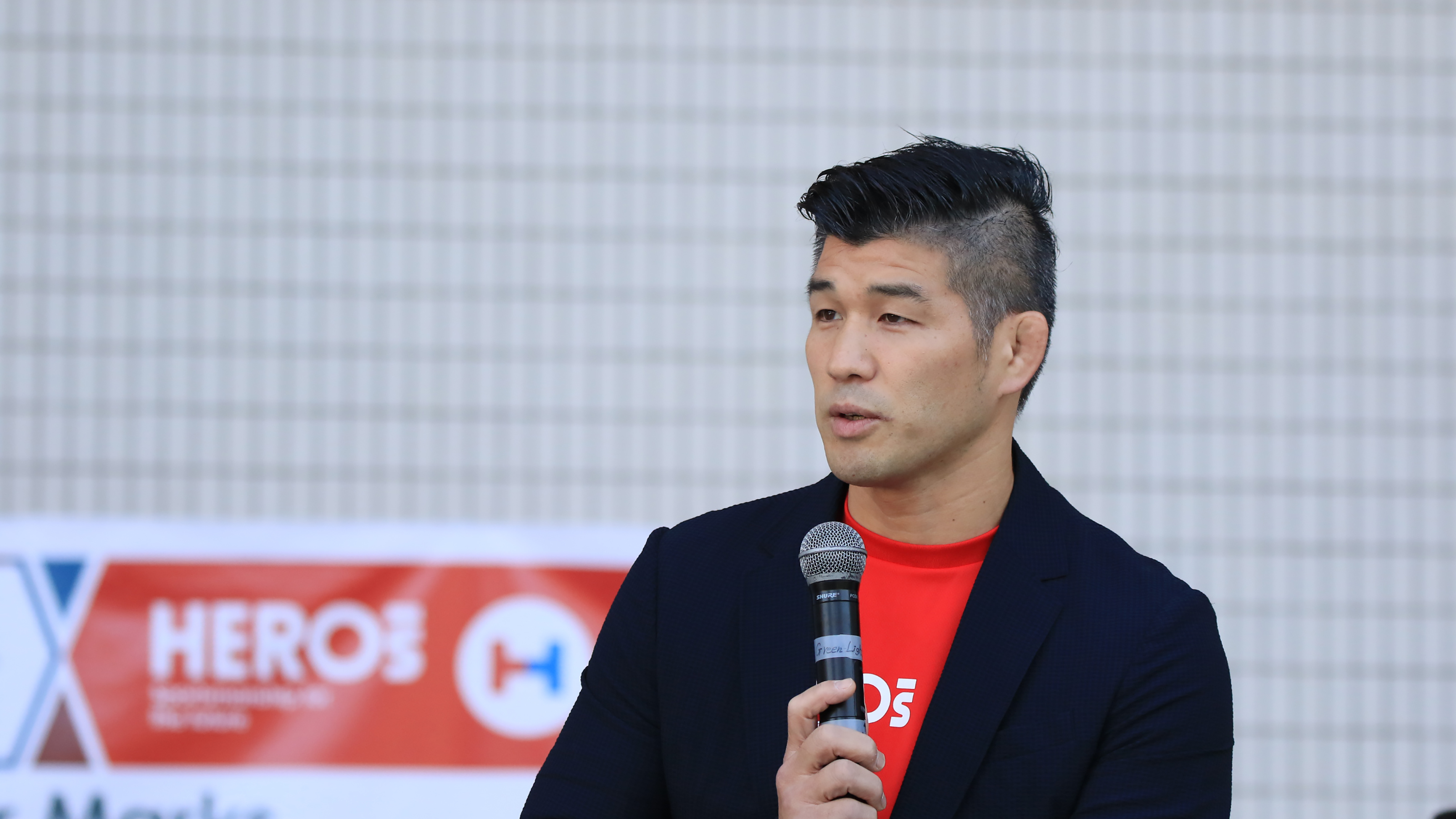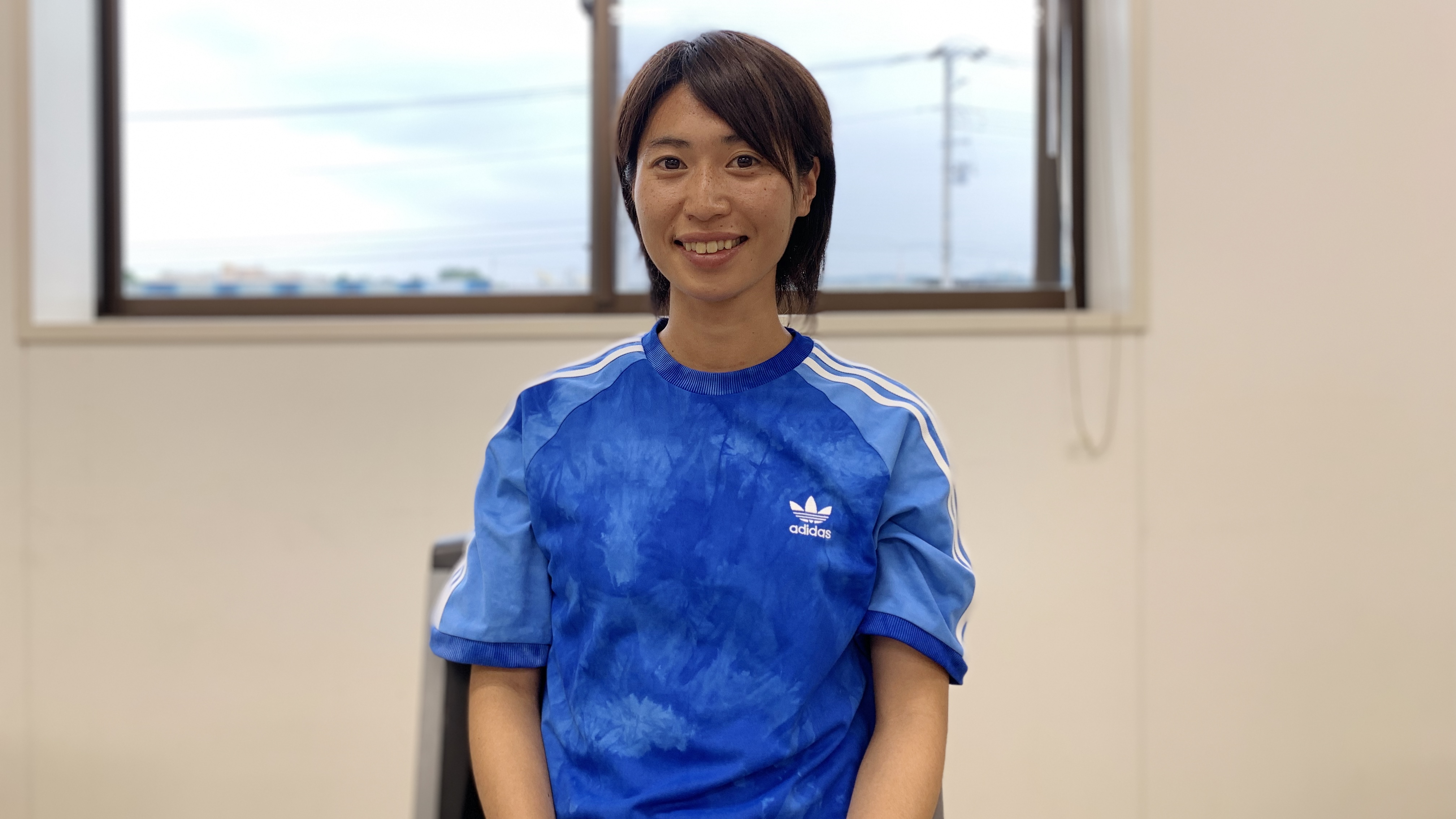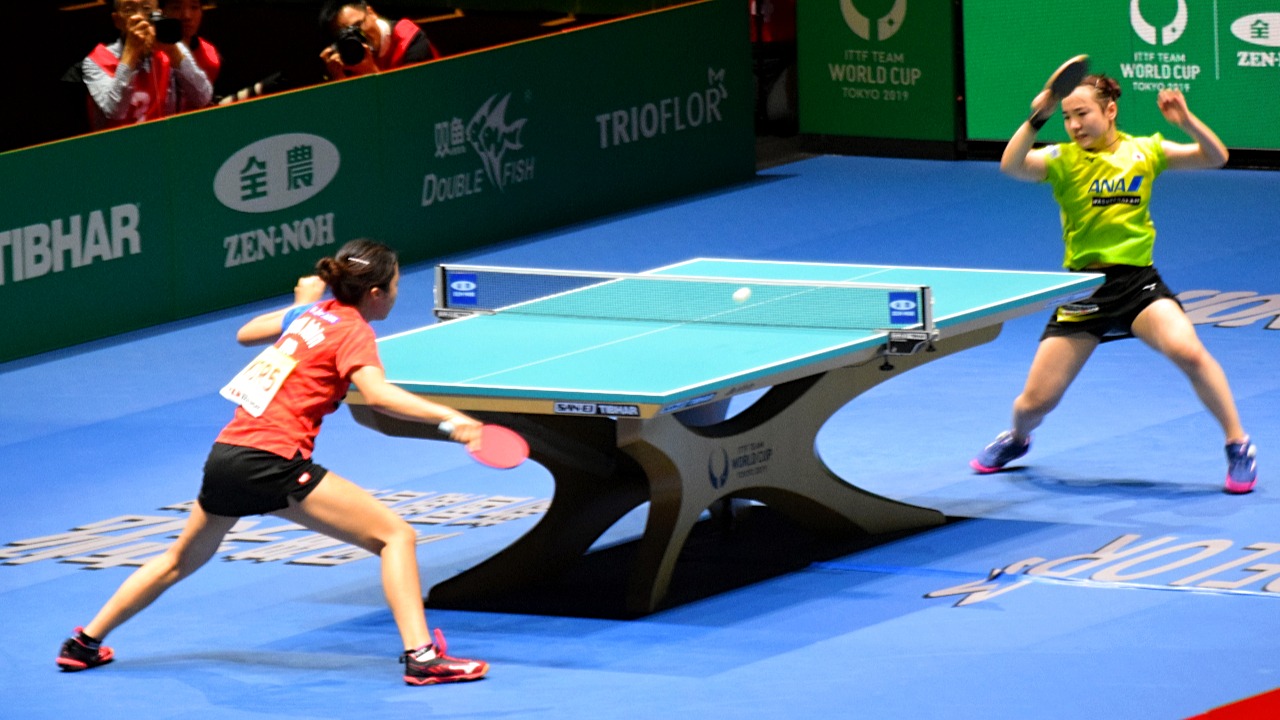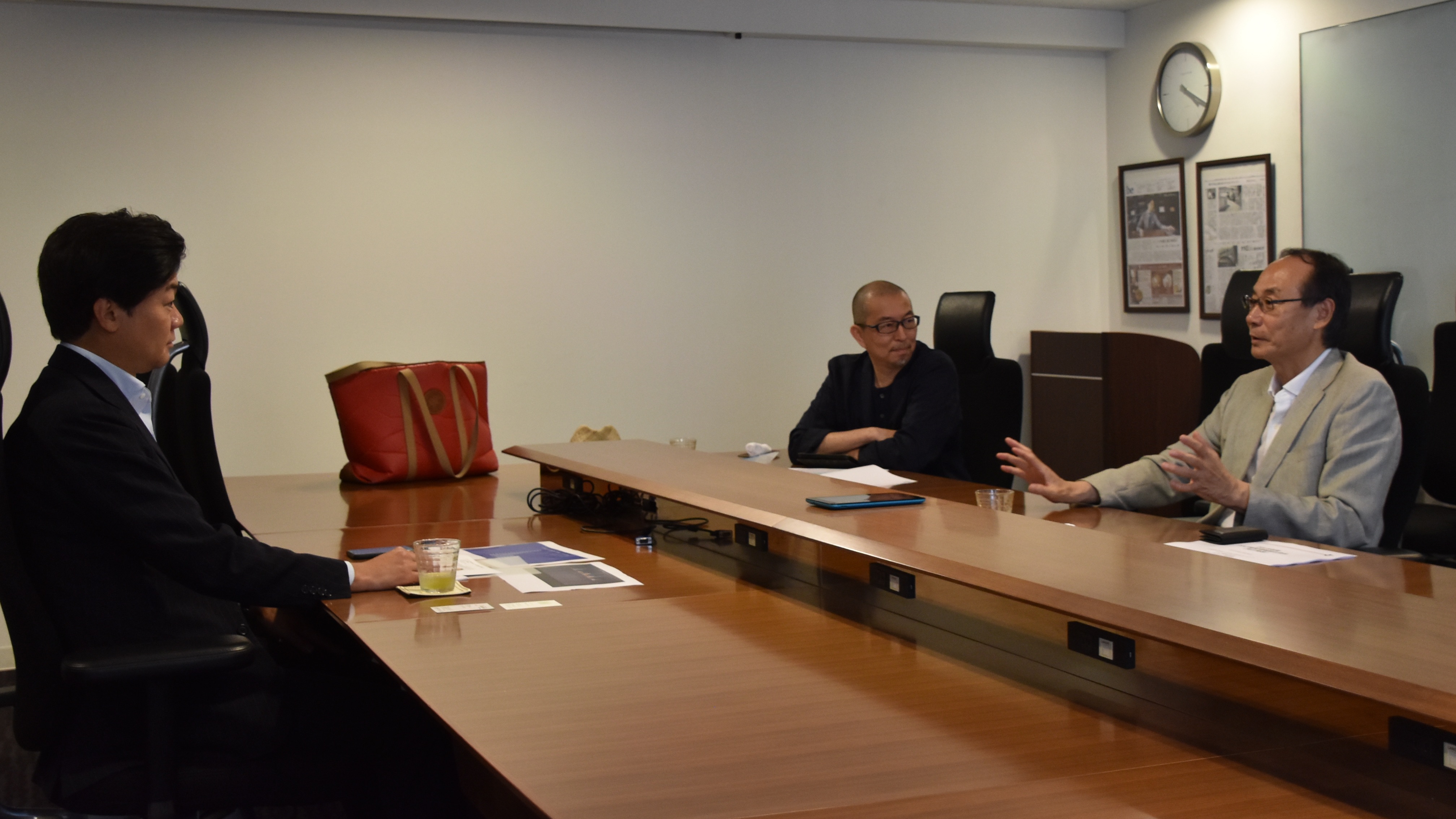
"The Challenge of Japanese Soccer is Mental" Mr. Asen Wenger gives a lecture in Tokyo
Former Arsenal director Arsene Wenger, who signed a management contract with Yoshimoto Kogyo in September, attends a keynote lecture organized by "Shibuya Mirai Design" in Shibuya, Tokyo. We talked with Naoki Okane, President of FC Tokyo, Hideyuki Hanyu, President of Tokyo Verdy, and Mr. Takeshi Okada (FC Imabari, Chairman of the Board) who is the representative director of FC Imabari.
Mr. Wenger became the director of the Nagoya Grampus in 1995 and won the Emperor's Cup on New Year's Day the following year.
After that, in 1996, he was appointed as director of the Premier League and Arsenal, leaving three league titles and seven FA Cup titles and retiring after the 2018 season.
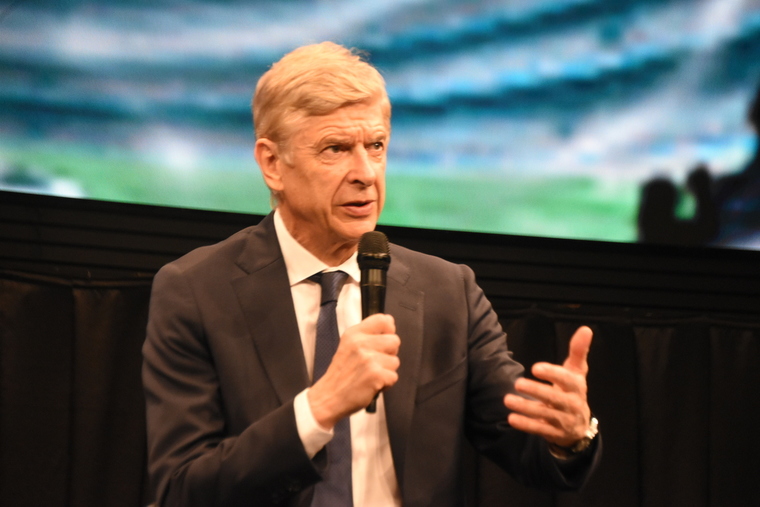
ーーーWenger also mentioned current Japanese football at the beginning.
Wenger:It was in 1995 that I came to Japan as a director of the Nagoya Grampus. At that time, it was a time when the soccer fever was rising as the J League started.
I spent time surrounded by people who wanted to know soccer. I still have the experience of discovering Japan.
Japanese soccer has grown and evolved significantly over the last 20 years. However, the weaknesses that existed 20 years ago are unfortunately not yet overcome. One of them is "panic" when you score a goal.
A good example is the 2018 Russia World Cup match against Belgium, and its weaknesses are still visible. I feel that overcoming such weaknesses is still an issue.
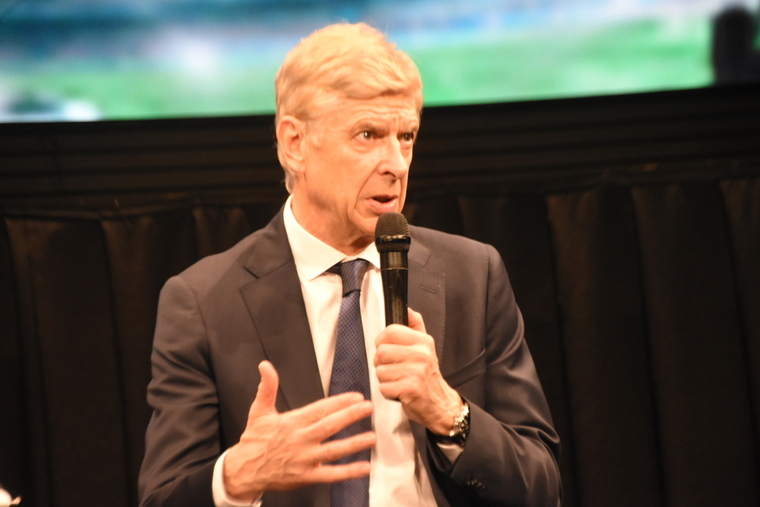
Wenger:Modern soccer requires top athletes with excellent physical abilities. Of these, "mental" is of particular importance.
In the midst of severe pressure, strong mentality is required to withstand and survive. They will need to be trained from the stage of nurturing the younger generation.
And you have to be highly motivated and enter the match without tension. Ideally, you should relax and move only the muscles you need. It is the ability of top players to accurately convey to the body what they thought they would do with their heads.

In Arsenal, Mr Wenger was commanding the construction of the Emirates Stadium with a capacity of 60,000 in 2006 while building the golden age of the team as a commander.
With the title of “Talking about the future of soccer stadiums”, FC Tokyo President Naoki Ogane and Tokyo Verdi President Hideyuki Hanyu were invited as guests to give a lecture on Wenger's vision of a soccer stadium and its social role. It was
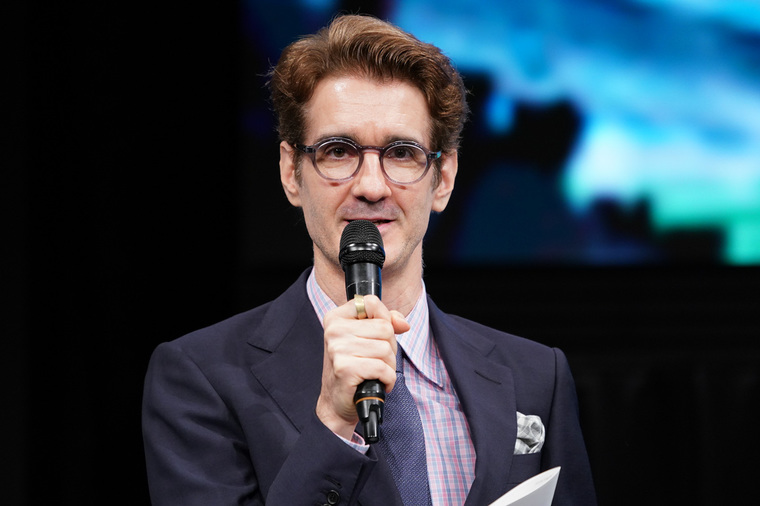
This event was moderated by Florand Dabadi
Daikin:To be honest, I feel the hurdle of building a stadium in Shibuya Ward. If we could build a new stadium, we would like to have a stadium that will help the two teams to grow, like San Siro in Milan, Italy. Even now, Tokyo Verdy and FC Tokyo are still using the Ajinomoto Stadium, so I don't think there will be any problems.
Opinions were also exchanged on issues related to the realization of the plan, such as construction costs and problems related to management of natural grass, and the first topic of the lecture entitled "Our curiosity" (Dabadi). Some of them have come down.〈Continue〉
Photo courtesy and coverage cooperation: Yoshimoto Kogyo Co., Ltd.
After that, in 1996, he was appointed as director of the Premier League and Arsenal, leaving three league titles and seven FA Cup titles and retiring after the 2018 season.

ーーーWenger also mentioned current Japanese football at the beginning.
Wenger:It was in 1995 that I came to Japan as a director of the Nagoya Grampus. At that time, it was a time when the soccer fever was rising as the J League started.
I spent time surrounded by people who wanted to know soccer. I still have the experience of discovering Japan.
Japanese soccer has grown and evolved significantly over the last 20 years. However, the weaknesses that existed 20 years ago are unfortunately not yet overcome. One of them is "panic" when you score a goal.
A good example is the 2018 Russia World Cup match against Belgium, and its weaknesses are still visible. I feel that overcoming such weaknesses is still an issue.

Wenger:Modern soccer requires top athletes with excellent physical abilities. Of these, "mental" is of particular importance.
In the midst of severe pressure, strong mentality is required to withstand and survive. They will need to be trained from the stage of nurturing the younger generation.
And you have to be highly motivated and enter the match without tension. Ideally, you should relax and move only the muscles you need. It is the ability of top players to accurately convey to the body what they thought they would do with their heads.

In Arsenal, Mr Wenger was commanding the construction of the Emirates Stadium with a capacity of 60,000 in 2006 while building the golden age of the team as a commander.
With the title of “Talking about the future of soccer stadiums”, FC Tokyo President Naoki Ogane and Tokyo Verdi President Hideyuki Hanyu were invited as guests to give a lecture on Wenger's vision of a soccer stadium and its social role. It was

This event was moderated by Florand Dabadi
--- Mr. Wenger seems to think that "the stadium should be in the city center"?
Wenger:For those of us who are busy, it's very "logical" to be able to go to a soccer game with less travel time after work. In fact, many European stadiums are located in the city.
If many people gather at the stadium to watch soccer, it will expand into a larger city and eventually become the center of the city.
The center of the city is an important element for building a "happy relationship between the city and the soccer stadium" in order to support the club and establish it as a place to have a good time with friends and as a part of life. I think.
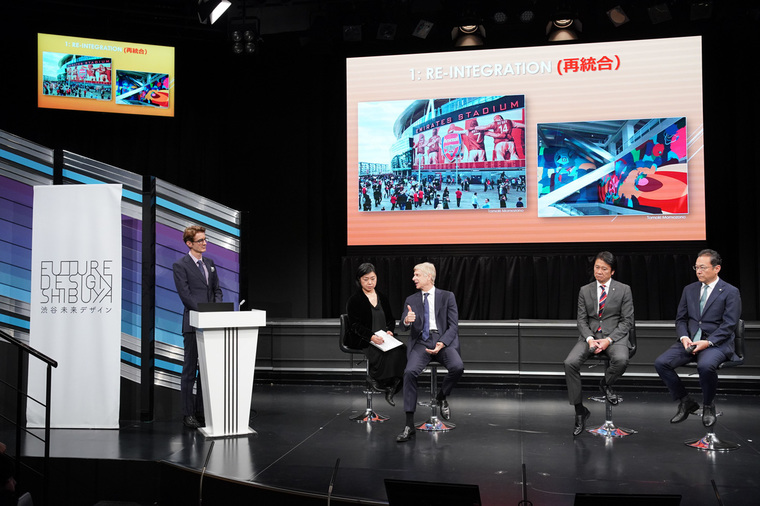
--- The stadium in London is always full, isn't it?
Wenger:At the Emirates Stadium, most seats are sold out with an annual pass.
40,000 people are always waiting for the same day tickets for 18,000 seats. Is it full when I'm there? That was the case when I was the director of the Nagoya Grampus. (Lol)
Wenger says that the stadium needs a "legacy" that there is something to go there even when there are no matches.
The Emirates Stadium has a training gym for young people, and the Dallas Cowboys stadium has a museum of contemporary art. , Talking with examples.
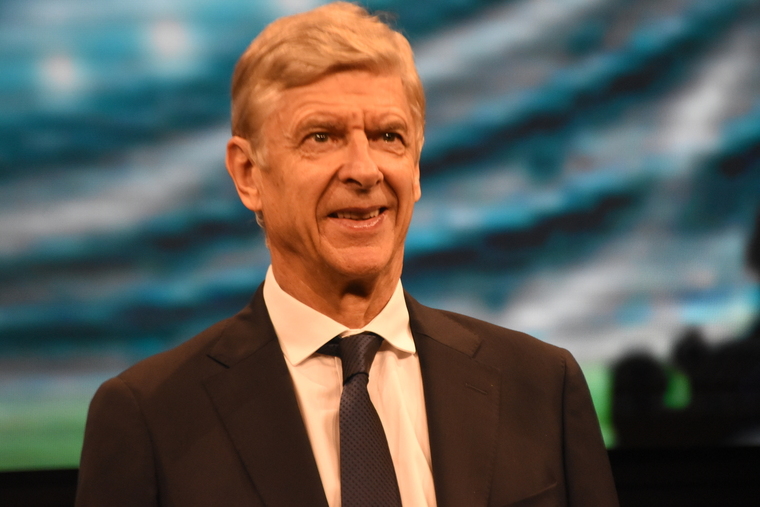
Naoki Ogane, president of FC Tokyo, and Hideyuki Hanyu, president of Tokyo Verdy, who are guests of the day, are working hard toward the goal of creating a soccer stadium in Shibuya by 2027.
Based on the track record of the Ajinomoto Stadium, which is based by both teams, used as an evacuation site during the Great East Japan Earthquake, there was an exchange of views on the stadium in Japan and its future.
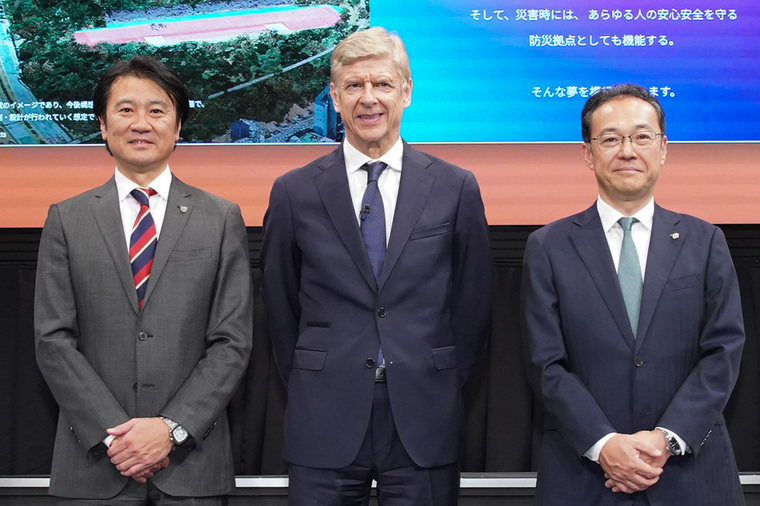
Hanyi:Verdi celebrates its 50th anniversary. In the future, we are aiming to become a "comprehensive sports club" that engages in various sports as well as soccer. To do this, we need a multifunctional stadium that can be used for various purposes 365 days a year.
Wenger:For those of us who are busy, it's very "logical" to be able to go to a soccer game with less travel time after work. In fact, many European stadiums are located in the city.
If many people gather at the stadium to watch soccer, it will expand into a larger city and eventually become the center of the city.
The center of the city is an important element for building a "happy relationship between the city and the soccer stadium" in order to support the club and establish it as a place to have a good time with friends and as a part of life. I think.

--- The stadium in London is always full, isn't it?
Wenger:At the Emirates Stadium, most seats are sold out with an annual pass.
40,000 people are always waiting for the same day tickets for 18,000 seats. Is it full when I'm there? That was the case when I was the director of the Nagoya Grampus. (Lol)
Wenger says that the stadium needs a "legacy" that there is something to go there even when there are no matches.
The Emirates Stadium has a training gym for young people, and the Dallas Cowboys stadium has a museum of contemporary art. , Talking with examples.

Naoki Ogane, president of FC Tokyo, and Hideyuki Hanyu, president of Tokyo Verdy, who are guests of the day, are working hard toward the goal of creating a soccer stadium in Shibuya by 2027.
Based on the track record of the Ajinomoto Stadium, which is based by both teams, used as an evacuation site during the Great East Japan Earthquake, there was an exchange of views on the stadium in Japan and its future.

Hanyi:Verdi celebrates its 50th anniversary. In the future, we are aiming to become a "comprehensive sports club" that engages in various sports as well as soccer. To do this, we need a multifunctional stadium that can be used for various purposes 365 days a year.
Daikin:To be honest, I feel the hurdle of building a stadium in Shibuya Ward. If we could build a new stadium, we would like to have a stadium that will help the two teams to grow, like San Siro in Milan, Italy. Even now, Tokyo Verdy and FC Tokyo are still using the Ajinomoto Stadium, so I don't think there will be any problems.
Opinions were also exchanged on issues related to the realization of the plan, such as construction costs and problems related to management of natural grass, and the first topic of the lecture entitled "Our curiosity" (Dabadi). Some of them have come down.〈Continue〉
Photo courtesy and coverage cooperation: Yoshimoto Kogyo Co., Ltd.

Others|
2019/11/17
Japanese women are not defeated by China, and silver medals are positive for the Tokyo Olympics. Yoshimasa Ito "I want to come back to this place with the power to win" [JA Zennotsu ITTF Table Tennis World Cup Team Finals]
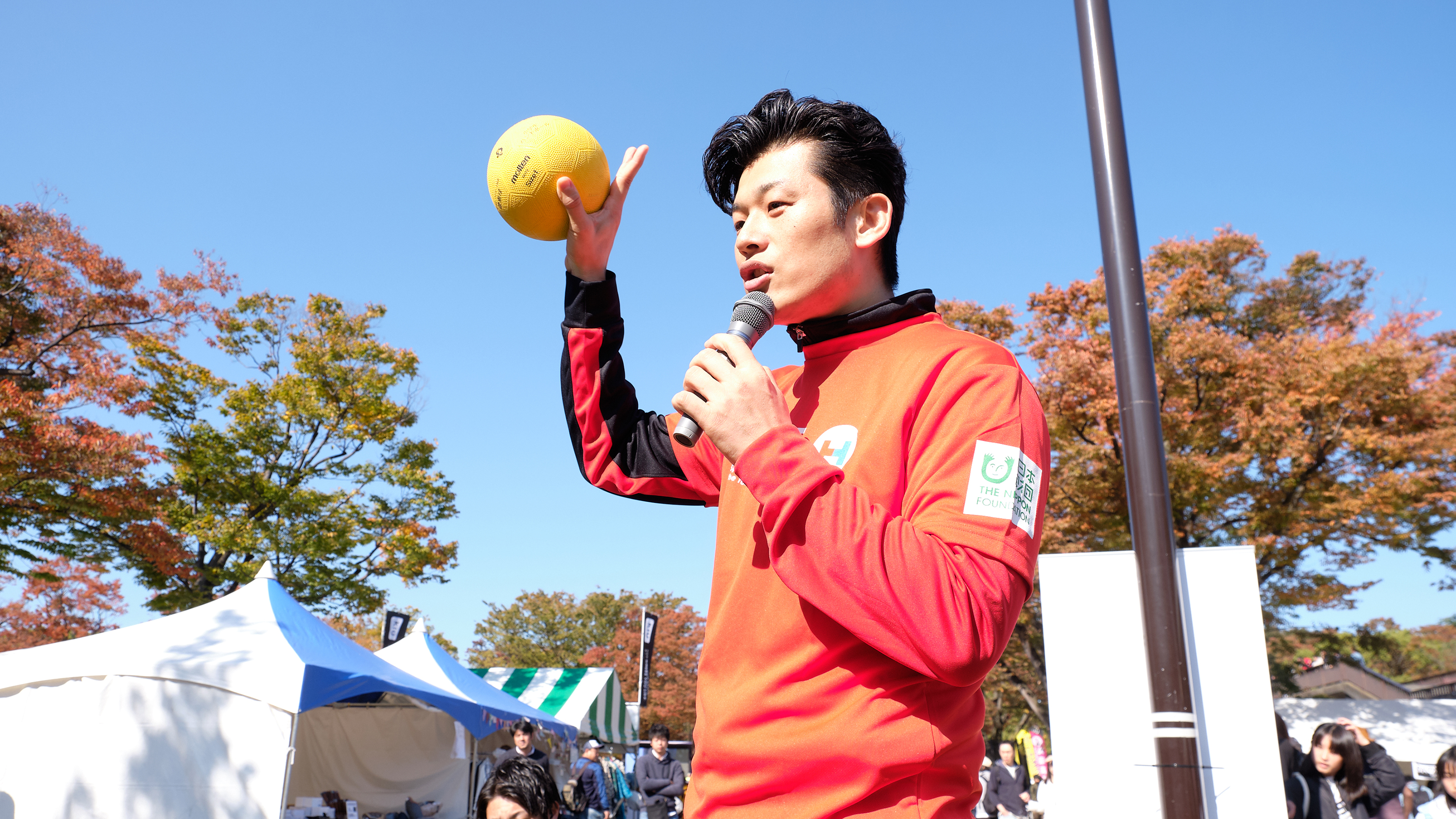
Others|
2019/11/15
Former captain of Japan's handball team, Shunsuke Azuma-Looking at the time when the sports world is exposed to evaluation-

Others|
2019/11/12
The importance of "a moment" that Hiroyuki Sakamoto, a former professional boxer who fought that famous game, wants to convey
Others|
2019/11/11
